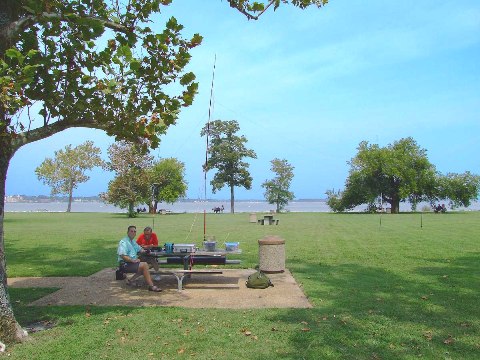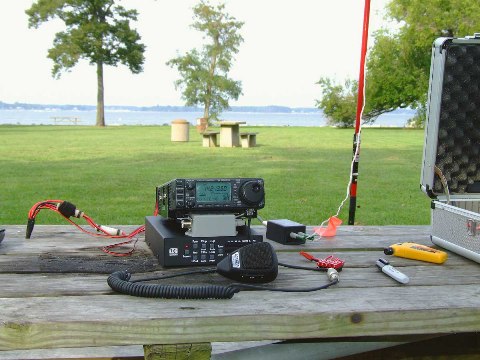 GYFWW: Get Your Feet Wet Weekend. This was an interesting event… all CW. My CW skills are atrocious and this was my attempt at improving. I enjoyed it, although at times it was very frustrating. The exchange was RST, name, state, FISTS #, and year licensed. Most folks were good at slowing down and repeating missed parts of the exchange. I spent a lot of time just sending CQ without a response. A contest doesn’t have the personal interaction of a regular QSO. At the end of the contest I had 18 contacts and over 200 points… no records broken here. I still have a long way to go on the CW. I would like to get my speed up to 15-20wpm – that will take a lot of consistent work.
GYFWW: Get Your Feet Wet Weekend. This was an interesting event… all CW. My CW skills are atrocious and this was my attempt at improving. I enjoyed it, although at times it was very frustrating. The exchange was RST, name, state, FISTS #, and year licensed. Most folks were good at slowing down and repeating missed parts of the exchange. I spent a lot of time just sending CQ without a response. A contest doesn’t have the personal interaction of a regular QSO. At the end of the contest I had 18 contacts and over 200 points… no records broken here. I still have a long way to go on the CW. I would like to get my speed up to 15-20wpm – that will take a lot of consistent work.
 Virginia Beach Hamfest: My second year attending the Virginia Beach Hamfest. A two-day hamfest, I went on Sunday. $5 to get in. There were a few vendors, but I had primarily come this year for RadioWorks, a local company from Portsmouth that makes great wire antennas. I purchased a Carolina Windom, 133′ long, good on 80M to 10M. The challenge now is to hang that bad boy. I’ll be assisted by my CSV19 Pneumatic Antenna Launcher.
Virginia Beach Hamfest: My second year attending the Virginia Beach Hamfest. A two-day hamfest, I went on Sunday. $5 to get in. There were a few vendors, but I had primarily come this year for RadioWorks, a local company from Portsmouth that makes great wire antennas. I purchased a Carolina Windom, 133′ long, good on 80M to 10M. The challenge now is to hang that bad boy. I’ll be assisted by my CSV19 Pneumatic Antenna Launcher.
 T-238+ APRS WX Project: The main board was good to go. I put the modem board together Friday night, checked out and good to go. Then came Saturday, I was interfacing the WX sensors (temp, wind speed and direction)… it worked! I was getting the data to read out properly. However, when I tried to interface the modem board with the radio, the LCD screen started showing all solid squares instead of text and the heat sink got very, very hot. The LED heartbeat light is still functioning, but clearly there is something wrong. Hope I’m not back to square one. http://www.tapr.org/kits_t238plus.html
T-238+ APRS WX Project: The main board was good to go. I put the modem board together Friday night, checked out and good to go. Then came Saturday, I was interfacing the WX sensors (temp, wind speed and direction)… it worked! I was getting the data to read out properly. However, when I tried to interface the modem board with the radio, the LCD screen started showing all solid squares instead of text and the heat sink got very, very hot. The LED heartbeat light is still functioning, but clearly there is something wrong. Hope I’m not back to square one. http://www.tapr.org/kits_t238plus.html

 Went up to the
Went up to the 

 I enjoyed activating the Old Point Comfort Lighthouse this weekend. Went out both on Saturday and Sunday. Had some great QSOs. Was able to work N1LO and AG4GO (operating as N4P) at the New Point Comfort Lighthouse…. that was cool. Also had QSOs with Denmark, Bermuda, and El Salvador…. all new countries.
I enjoyed activating the Old Point Comfort Lighthouse this weekend. Went out both on Saturday and Sunday. Had some great QSOs. Was able to work N1LO and AG4GO (operating as N4P) at the New Point Comfort Lighthouse…. that was cool. Also had QSOs with Denmark, Bermuda, and El Salvador…. all new countries. Knocked out some more
Knocked out some more 
 I had a good time. Putting together the Amateur Radio Station In a Box (
I had a good time. Putting together the Amateur Radio Station In a Box (

